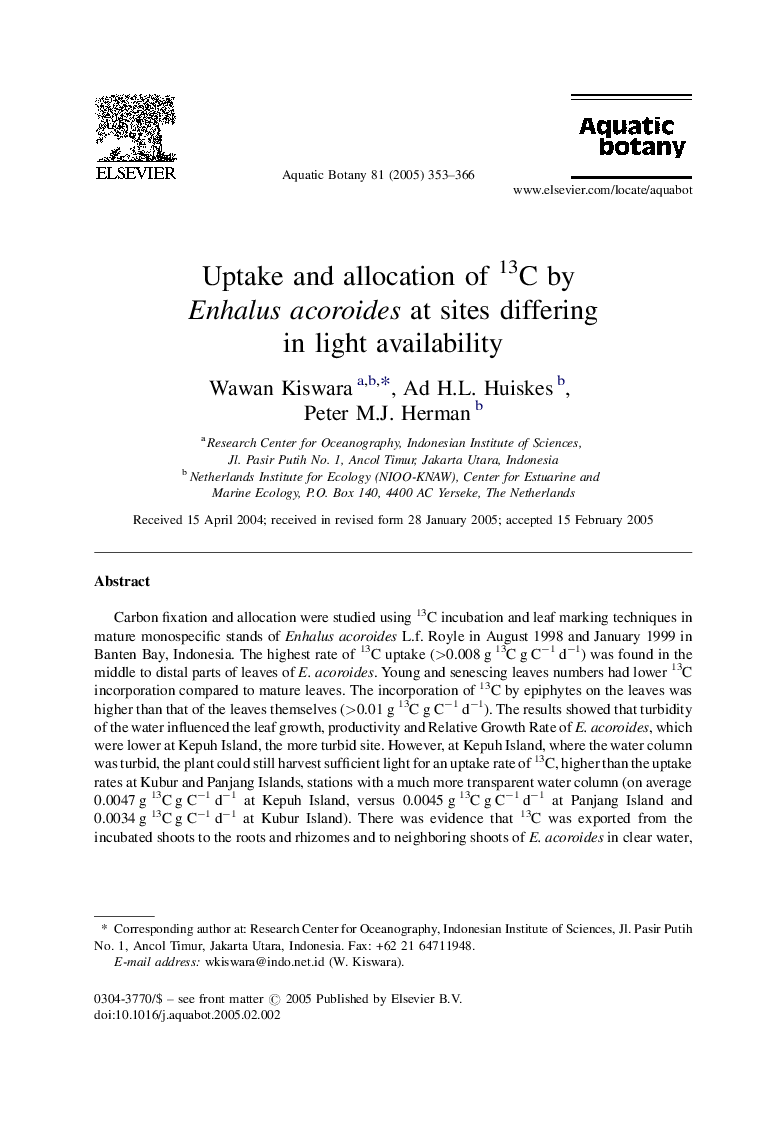| Article ID | Journal | Published Year | Pages | File Type |
|---|---|---|---|---|
| 9477596 | Aquatic Botany | 2005 | 14 Pages |
Abstract
Carbon fixation and allocation were studied using 13C incubation and leaf marking techniques in mature monospecific stands of Enhalus acoroides L.f. Royle in August 1998 and January 1999 in Banten Bay, Indonesia. The highest rate of 13C uptake (>0.008 g 13C g Câ1 dâ1) was found in the middle to distal parts of leaves of E. acoroides. Young and senescing leaves numbers had lower 13C incorporation compared to mature leaves. The incorporation of 13C by epiphytes on the leaves was higher than that of the leaves themselves (>0.01 g 13C g Câ1 dâ1). The results showed that turbidity of the water influenced the leaf growth, productivity and Relative Growth Rate of E. acoroides, which were lower at Kepuh Island, the more turbid site. However, at Kepuh Island, where the water column was turbid, the plant could still harvest sufficient light for an uptake rate of 13C, higher than the uptake rates at Kubur and Panjang Islands, stations with a much more transparent water column (on average 0.0047 g 13C g Câ1 dâ1 at Kepuh Island, versus 0.0045 g 13C g Câ1 dâ1 at Panjang Island and 0.0034 g 13C g Câ1 dâ1 at Kubur Island). There was evidence that 13C was exported from the incubated shoots to the roots and rhizomes and to neighboring shoots of E. acoroides in clear water, but not in turbid water. We suggest that single shoots of E. acoroides are able to grow in turbid water under low light conditions. They assimilate sufficient carbon for their own maintenance but are not able to export to neighboring plant parts.
Related Topics
Life Sciences
Agricultural and Biological Sciences
Aquatic Science
Authors
Wawan Kiswara, Ad H.L. Huiskes, Peter M.J. Herman,
